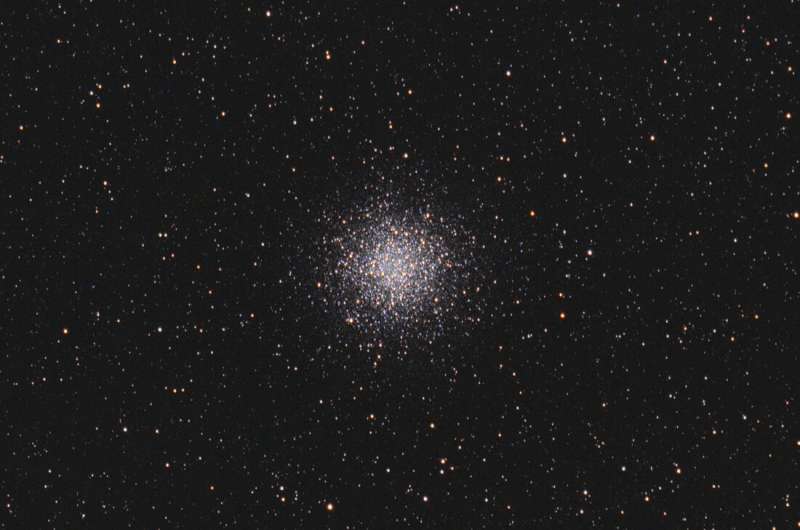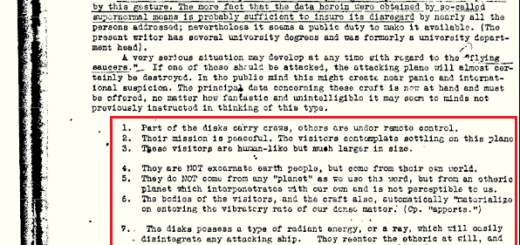Researchers explore the surroundings of globular cluster NGC 6809

Using the 4-meter Blanco telescope at the Cerro Tololo InterAmerican Observatory (CTIO), astronomers have mapped the outermost regions of a galactic globular cluster known as NGC 6809. Results of the study, published May 24 on the arXiv pre-print server, could improve our understanding of this cluster and its surroundings.
Globular clusters (GCs) are collections of tightly bound stars orbiting galaxies. Astronomers perceive them as natural laboratories enabling studies on the evolution of stars and galaxies. In particular, globular clusters could help researchers to better understand the formation history and evolution of early-type galaxies as the origin of GCs seems to be closely linked to periods of intense star formation.
NGC 6809 (also known as Messier 55 or M55) is a galactic GC in the constellation Sagittarius, located some 17,600 light years away. It has a radius of about 48 light years, mass of approximately 269,000 solar masses and is estimated to be 12.3 billion years old. Although many studies of NGC 6809 have been conducted, still little is known about its outermost regions.
In order to change this, a team of researchers led by Andres E. Piatti of the National University of Cuyo in Mendoza, Argentina, decided to investigate this cluster and its surroundings with the Dark Energy Camera (DECam) of the CTIO’s 4-m Blanco telescope.
“Here, we explored the outermost regions of NGC 6809. We built its CMD [color-magnitude diagram] from DECam images centered on the cluster, which reached nearly 6 mag below the cluster MS [main sequence] turnoff,” the astronomers wrote in the paper.
Piatti’s team constructed stellar density maps for stars distributed in five different magnitude intervals along the cluster main sequence. Such maps are useful tools when it comes to identifying extra-tidal features distributed around the cluster’s main body.
By analyzing the stellar density maps, the astronomers found that only stars—with NGC 6809 membership probability over 70 percent and more than 4 mag fainter than those at the MS turnoff—exhibit some excesses of stars at opposite sides from the cluster center. This suggests that less massive stars are prone to leave the cluster more easily.
The research detected no signs of tidal tails in the studied inner globular cluster sample. This is in agreement with recent results from numerical simulations and suggests that it could be due to a comparative shorter diffusion time. The researchers explained that the diffusion time of streams (tidal tails in GCs) is reduced by gravitational potentials that sustain chaotic orbits.
“The lack of detection of tidal tails in the studied inner globular cluster sample could be due to the reduced diffusion time of tidal tails by the kinematically chaotic nature of the orbits of these globular clusters, thus shortening the time interval during which the tidal tails can be detected,” the authors of the paper concluded.



 Creators of mankind
Creators of mankind Description of “Tall white aliens”
Description of “Tall white aliens” Where they came from?
Where they came from? About hostile civilizations
About hostile civilizations The war for the Earth
The war for the Earth “Tall white aliens” about eternal life
“Tall white aliens” about eternal life Video: “Nordic aliens”
Video: “Nordic aliens” Aliens
Aliens Alien encounters
Alien encounters The aliens base
The aliens base UFO
UFO Technology UFO
Technology UFO Underground civilization
Underground civilization Ancient alien artifacts
Ancient alien artifacts Military and UFO
Military and UFO Mysteries and hypotheses
Mysteries and hypotheses Scientific facts
Scientific facts


















